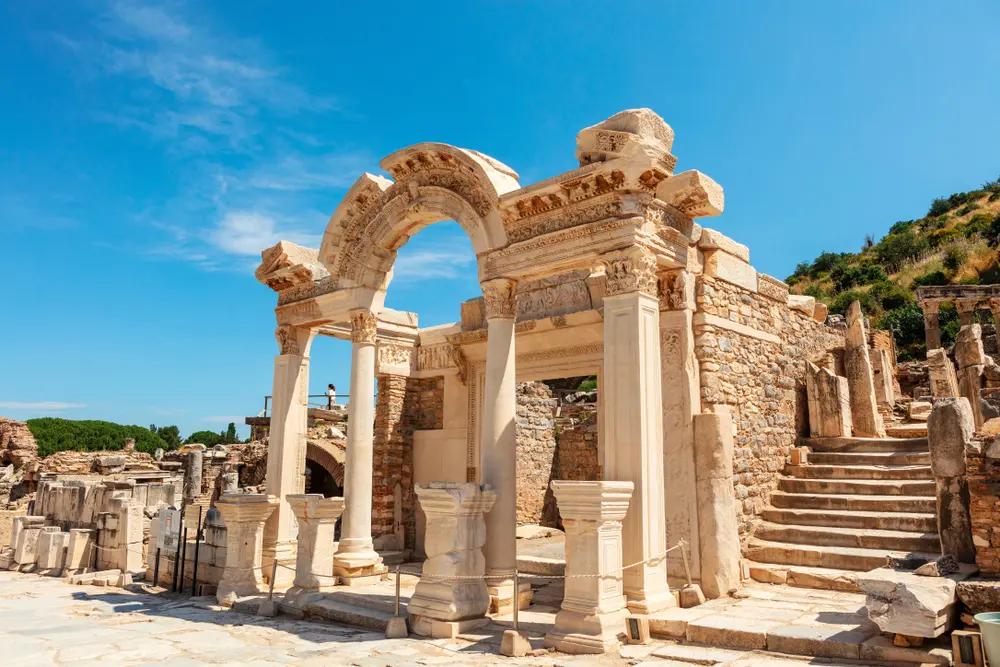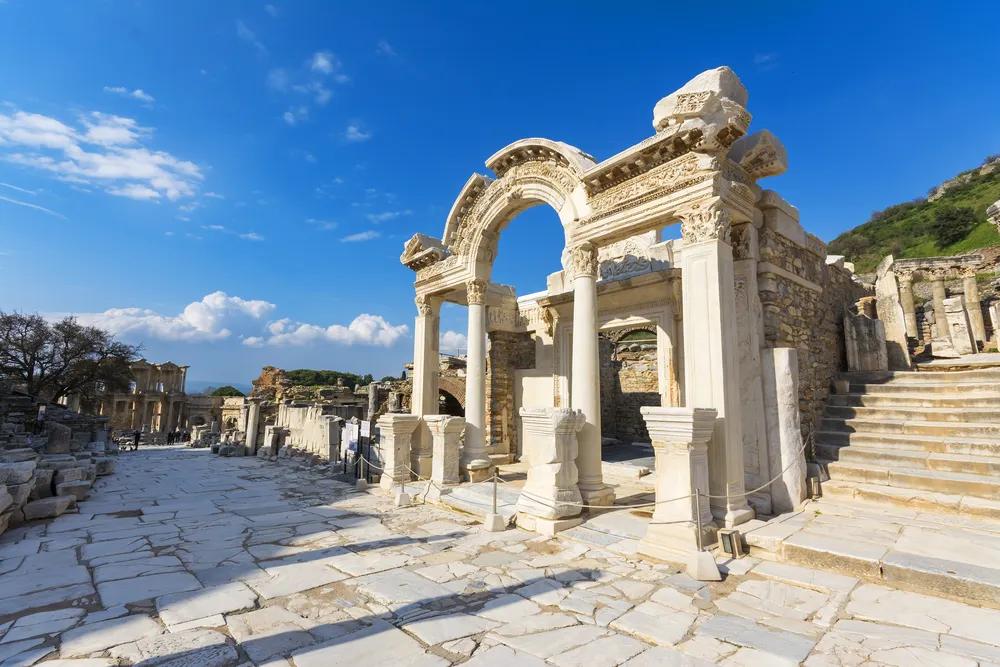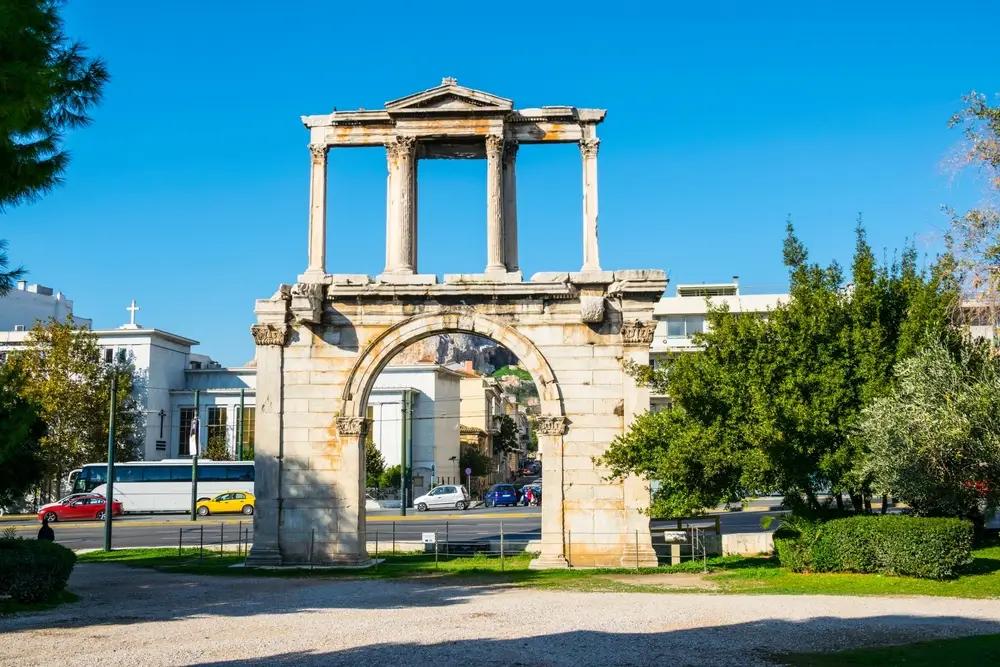
The Hadrian Arch
The Hadrian Arch is one of the most recognizable landmarks you can get to meet in our Greece Travel Packages, also referred to as the Hadrian's gate in Greek. This grand entranceway bears a striking resemblance, in certain aspects, to a triumphal arch from ancient Rome. It once stood over a historic road that connected the heart of Athens to a complex of buildings on the eastern side of the city, which included the renowned Temple of Olympian Zeus.
What is the story of Hadrian's Gate?
Hadrian's Arch, located in Athens, a significant ancient that you can visit while having a tour on one of our Greece Travel Packages and a monument that dates back to the 2nd century AD. Here are the key details about the Hadrian Arch:
The Hadrian Arch was built to honor the Roman Emperor Hadrian, who visited Athens in 131-132 AD during his extensive travels through the Roman Empire. The arch is made of Pentelic marble and spans an ancient road that led from the center of Athens to the Olympieion (the Temple of Olympian Zeus). It consists of a single monumental archway with Corinthian columns and is adorned with reliefs and inscriptions.
The Hadrian Arch served both a practical and symbolic purpose. It marked the boundary between the old city of Athens and the new Roman city that Hadrian envisioned. It also symbolized the gratitude of the Athenians towards Hadrian, who was a great admirer of Greek culture and philosophy.
Today, Hadrian's Arch stands near the Temple of Olympian Zeus and the historic district of Plaka in Athens. Despite centuries of wear and damage, it remains largely intact, showcasing the architectural prowess and cultural integration of the Roman period in Greece.

What is Hadrian famous for?
The Hadrian Arch in our Greece Travel Packages is famous for several reasons:
1. Historical Significance:
Built by the Roman Emperor Hadrian in the early 2nd century AD, Hadrian's Arch marked the northernmost boundary of the Roman Empire in Britain. It spanned approximately 73 miles (118 kilometers) from coast to coast, from Wallsend on the east coast to Bowness-on-Solway on the west coast.
2. Military and Defensive Structure:
The wall was constructed primarily as a defensive fortification to protect Roman Britain from invasions by tribes to the north, specifically the Picts from present-day Scotland. It consisted of a stone wall with forts, milecastles (small forts), and turrets along its length, demonstrating Roman engineering and military strategy.
3. Cultural Heritage:
The Hadrian Wall symbolizes the Roman Empire's influence and presence in Britain. It is a UNESCO World Heritage Site and one of the most significant Roman archaeological sites in the world. The wall and its associated remains offer insights into Roman life, military practices, and cultural interactions during the period of Roman occupation.
4. Tourist Attraction:
Today, Hadrian's Arch is a major tourist attraction, drawing visitors from around the globe. The wall's well-preserved sections, scenic landscape, and numerous museums and archaeological sites along its route provide opportunities to explore Roman history and heritage in Britain.

